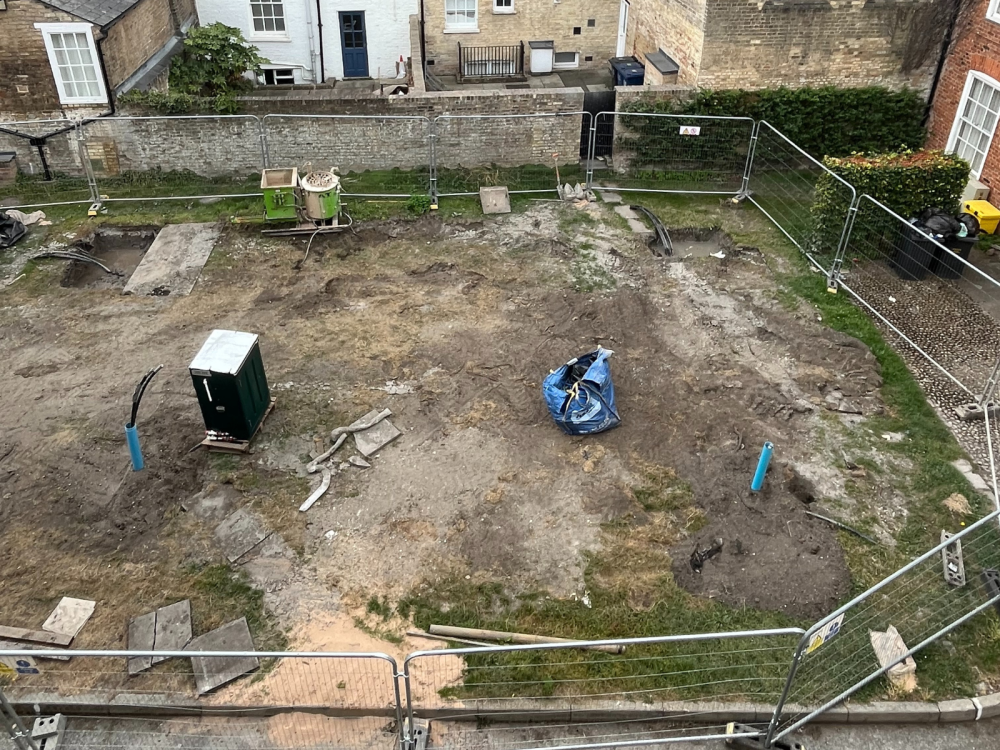Top five global university moves closer to net zero: Peterhouse
We visited a 13th century University of Cambridge college to discuss the transition to a sustainable campus.
Located in the east of England, Cambridge is a renowned university town and home to the world-famous University of Cambridge. Founded in 1209, today this historic university comprises 31 colleges, each working towards their own net zero targets.
Our team was on the ground in Cambridge to visit three of the colleges – Gonville and Caius, St Catharine’s and Peterhouse. They are paving the way toward a more sustainable future thanks to projects enabled through government funding.
Zoe Naylor, our client support officer, who has been working with the university, said: “It was fantastic to visit the sites and to see how these three colleges are progressing against their net zero aims.
“Each college estate requires a unique and tailored approach when it comes to decarbonisation. It was great to meet with the passionate people driving these trailblazing schemes.”
We were on site to meet with college representatives, see project progress and discuss the opportunities and challenges faced by each organisation on the journey to net zero.
Peterhouse
Peterhouse is the oldest of all University of Cambridge colleges, originally founded in 1284.
A registered charitable institution dedicated to education and research, the college prides itself on having contributed to society for more than 700 years. Driven by a 2038 net zero ambition, the college is passionate about reducing its environmental impact to ensure it can continue to contribute to society for centuries to come.
Leon Waldock, project manager at Peterhouse, said: “Peterhouse is committed to being net zero by 2038 and we recognise that a wide-reaching approach is needed to help us achieve this.”
Peterhouse is committed to being net zero by 2038 and we recognise that a wide-reaching approach is needed to help us achieve this.
Supported by a £565,000 government grant, the college has commenced a £3 million project at its Cosin Court accommodation block. Cosin Court provides accommodation for PhD students, including students involved with important biotechnology and human health research.
Grant funding was awarded through Phase 3c of the Public Sector Decarbonisation Scheme. We deliver funding for this scheme on behalf of the Department for Energy Security and Net Zero.
The project will allow the accommodation block to undergo a complete transformation with double glazing, dry wall lining, loft insulation and floor insulation ensuring heat loss is minimised. An old fossil fuel boiler will be replaced with a ground source heat pump which will produce the heating and hot water for the building. Additionally, solar panels will be installed to support the additional electrical demand required for the heat pump.
Leon added: “It is our hope that the Cosin Court ground source heat pump system, and others like it going forward, will help us move closer to our vision while still prioritising the comfort and care of everyone in our college community now, and long into the future.”
It is our hope that the Cosin Court ground source heat pump system, and others like it going forward, will help us move closer to our vision while still prioritising the comfort and care of everyone in our college community now, and long into the future.
The works will see 28 boreholes feed into the ground source heat pump, which became the low carbon technology of choice as it is best suited to the residential area which it will service.
College energy experts expect the project will reduce annual energy bills by £11,694 and carbon emissions by 97.32 tonnes a year. A 97.32 tonne reduction of carbon emissions is equivalent to the carbon absorption capacity of 4,424 trees*.
We were on site with college project manager Leon Waldock and consultant representative Matt Smith. Leon and Matt hosted the visit with high enthusiasm and excitement, speaking to the unique nature of the works – understood as one of the first of its kind to be delivered in the UK.
The unique nature of the works stems from an approach that will see the ground source heat pump assisted by solar thermal. Solar thermal used in this manner will assist in recharging the ground when supply outweighs demand. This will, in turn, provide additional supply capacity and efficiency in months of higher demand, such as winter, by reducing the drop in ground temperature that typically occurs for ground source heat pump systems without this ‘recharge’ mechanism.
Key to project success, says Leon, is conducting the works in a phased approach to ensure minimal disruption to students. Leon also expects that the results of this pilot project will be used as lessons for future works.
Leon said: “At every stage in our net zero mission, we have ensured that decisions made are well-informed and backed by thorough research and experience.
“So far, we have drawn on advice from consultants, sub-contractors and other organisations to provide a thorough understanding of how this new system should work – in particular how the reheating of the ground during summer will ensure the long-term sustainability of the project.
“While we have reviewed in detail other examples of this being used across Europe, we have not come across other similar schemes in the UK and are looking forward to monitoring its success going forward.”
Read more about proposed changes to the works at Gonville and Caius College and St Catharine's via the news area of our website.


* Carbon calculations have been generated through a tool created by our carbon and technical experts here at Salix. The intention is to provide carbon savings estimates to aid with a common understanding of emission data and statistics. These estimates are approximate; it is not recommended to use this tool for formal carbon emissions analysis. The tool uses UK government conversion factors alongside emissions estimates sourced from various studies, but it is possible a margin of error may exist. For more information about the formulas and methodology used in this tool, please contact us at [email protected]. E&OE.




